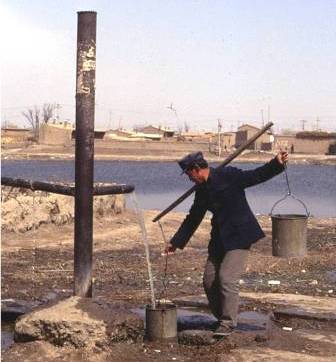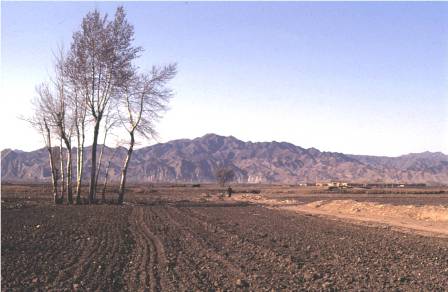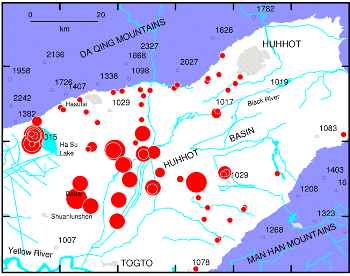Arsenic in groundwater in the Huhhot Basin, Inner Mongolia, China

The BGS, in collaboration with the Huhhot Anti-Epidemic and Sanitation Station (Huhhot, Inner Mongolia), carried out an investigation of the occurrence, distribution and causes of arsenic in groundwater from Quaternary aquifers in rural parts of the Huhhot Basin (around 4800 km2), Inner Mongolia, China.
The investigation followed the discovery, by our collaborators, of health problems consistent with chronic arsenic exposure in village populations. Observed health problems include skin lesions (keratosis, melanosis, skin cancer) and internal cancers (lung and bladder cancer).
The BGS hydrogeochemical investigation was funded by the UK government's Department for International Development (DFID ).
Huhhot Basin

The Huhhot Basin lies on the southern edge of the Gobi Desert and has an arid climate. The rural population of the area relies solely on groundwater for drinking and domestic use.
Groundwater from a shallow aquifer is accessed using traditional open dug wells and more recent hand-pumped boreholes, usually <30 m deep. Boreholes >100 m deep tap into a deeper aquifer, which is often artesian.
The aquifers in the basin are young (Quaternary) sediments of fluvial and lacustrine origin.
Arsenic-affected aquifers
We sampled a representative set of groundwaters from both aquifers. Analysis showed:
- groundwaters have a large observed range of arsenic concentrations (<1–1480 µg/L)
- concentrations greater than 10 µg/L occur in groundwaters from both the shallow and deep aquifers
- some open dug wells have arsenic concentrations >10 µg/L
- high arsenic concentrations are frequently associated with high concentrations of dissolved Fe, Mn, NH4, DOC, HCO3 and P, and low SO4 concentrations, consistent with occurrence under strongly reducing conditions
- dissolved arsenic is dominated by inorganic As(III)
- deep groundwaters have particularly high dissolved organic carbon (DOC) concentrations (up to 30 mg/L), reflecting enrichment in humic acid
Our results for limited sediment analysis from the area revealed:
- total arsenic concentrations in the range 3–29 mg/kg, 30% being oxalate-extractable and suggesting an origin largely from amorphous and poorly-structured iron oxides
Groundwater chemistry and arsenic release
Groundwater in the Huhhot aquifers flows from the basin margins towards the low-lying central part (see map).
The groundwaters display a strong change in redox conditions with flow, being oxic along the basin margins but strongly reducing downgradient in the low-lying part of the basin.
High groundwater arsenic concentrations appear to occur in villages taking water from the strongly reducing parts of the aquifers.
Release of arsenic from iron oxides by desorption and reductive dissolution is proposed as the principal mechanism.
Organic carbon is a strong driver for the microbially-mediated redox reactions, including that of arsenic release.
Alternative supplies
Alternative options for water supply are somewhat limited in this arid region. Use of piped groundwater supplies from the resources available on the margins of the basin is an option, though careful monitoring of groundwater for other trace elements is important.
Concentrations above the respective WHO guideline values for trace elements such as fluoride, uranium, manganese, boron and molybdenum have been found in some groundwaters from the area.
Unlike in Bangladesh, accessible deep groundwaters are not a viable option for low arsenic drinking water in the worst affected areas of the Huhhot Basin.
Publications
Smedley, P L, Zhang, M, Zhang, G, and Luo, Z. 2003. Mobilisation of arsenic and other trace elements in fluviolacustrine aquifers of the Huhhot Basin, Inner Mongolia. Applied Geochemistry, 18, 1453–1477.
Contact
Contact Dr Pauline Smedley for further information







